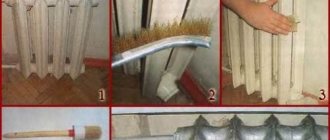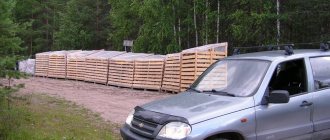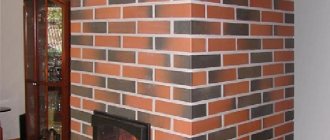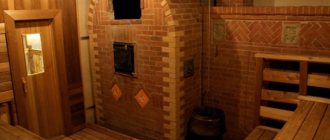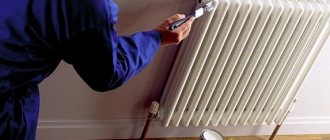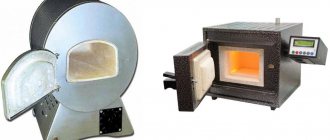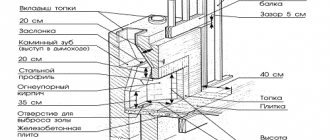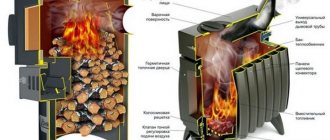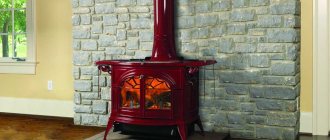Types of heat-resistant paints for ovens
Colorants labeled "heat resistant" vary in the maximum temperature they can withstand. Several main types should be distinguished:
- Up to 80 degrees . This composition has the lowest degree of heat resistance. At temperatures closer to eighty degrees, they begin to deteriorate: crack and swell. For devices that will run on wood fuel, this composition is not suitable, because the combustion temperature of the logs is much higher.
- Up to 100 degrees . Such products are more stable. They do not fade or fade. They are used to paint those parts of the heating product where water is located. After all, the boiling point of water is 100 degrees, so the dyes in this case will last a very long time. But it is not recommended to completely paint all stove surfaces with this coloring agent, as it may crack. On the packaging of this type of product you can find the words “acrylic” or “alkyd”. The most common aerosol forms of release.
- Up to 120 degrees . High-temperature paint for this type of stove can withstand even higher temperatures. These are products that contain polyurethane, epoxy or acrylic.
- Up to 200 degrees . Such coatings can be applied to furnace parts that do not heat up very much (the ash door). If you apply type 4 products to the entire surface or metal parts inside, it will begin to burn and quickly deteriorate.
- Up to 400 degrees . These are ethyl silicates or epoxy esters. The composition of such products includes small metal particles, which help to significantly increase the resistance of the coating to heat and increase its service life.
- Up to 650 degrees . Such products can be used to cover the entire surface of the oven. When heated strongly, they will not melt or deform. Silicone, zinc and aluminum are added to their composition, which ensure resistance and durability.
Painting the fireplace
A fireplace is an extremely fashionable accessory for a living room, both classic and modern. In a country house you can find both this option and a more traditional one - a stove, both Russian and Dutch.
And if the hearth plays only a decorative role, then there are no problems with its finishing - any material will do. But when it comes to an existing structure, questions arise. We will tell you in this article how it works and how much it costs to lay clinker tiles.
- The main thing in this matter is the coefficient of thermal expansion. Obviously, if the cladding has this indicator less than the brick, the heat simply will not be transferred. Clinker tiles have a coefficient of 7–8%, which is considered sufficient.
- Thermal conductivity is the ability of a material to conduct heat. It would seem that metal has the best performance here, but fireplaces are never finished with it, since metal heats up excessively and poses a danger to others. And the function of the stove is not only to quickly heat the room, but also to maintain the thermal regime. The thermal conductivity of clinker is, in principle, rather low, but here another property of the material comes to the rescue.
- Heat capacity is the ability to accumulate heat and release it gradually. This property of all ceramic products is highly valued by stove makers, so clinker ultimately turns out to be a completely suitable material, but only for a fireplace.
For cladding, it is preferable to choose clinker produced by the semi-dry method.
- Extruded tiles are denser, and the higher the density, the lower the heat capacity and ability to conduct heat.
- The semi-dry method allows you to obtain a material that is more porous, and, therefore, with better expansion coefficients. Of course, such tiles are not suitable for facade decoration, but for fireplaces they are the right choice. But even in this case, you should find another material for heating stoves - terracotta tiles, for example, or tiles.
The remaining properties of clinker are not so important, although they are useful.
- Fire resistance - the finishing of the hearth must be durable, and therefore resistant to high temperatures and constant heating. Clinker fully meets these requirements.
- Durability, or rather, resistance to scratches and mechanical damage, has a very positive effect on preserving the appearance of the fireplace.
- Water resistance is of indirect importance, since fires are usually placed in dry residential areas. But for those cases when the stove is in the kitchen or separates the work and kitchen areas, moisture resistance is in demand.
- Of course, chemical inertness, the ability not to accumulate dirt, and so on are also important. Clinker is easy to clean; household chemicals are completely acceptable when cleaning.
- Wear resistance in this case does not matter.
Clinker tiles for the stove (photo)
Not every tile is suitable for finishing, and it’s not always a matter of quality.
- Heat resistance – indicated by the letter “T”. The tile must be fire resistant.
- The preferred thickness for a fireplace is 6–8 mm. It is impossible to go thinner, since here the material experiences constant heating, and thin tiles will quickly collapse. Square tiles measuring 120*120 mm are considered the best for cladding. With large dimensions and maintaining the same thickness, the rigidity and strength of the masonry decreases. And with increasing thickness, problems with fastening arise: the glue has a limited ability to hold weight.
- The color of the tile should vary within small limits, unless, of course, a special decorative technique is used.
- For tiles, dimensional accuracy is very important. It’s not even a matter of the aesthetic side of the issue: with different dimensions, it will not be possible to lay the tiles tightly. Therefore, the clinker should be checked: put 2 tiles together “facing” each other, and then the wrong side. There should be no gaps between the surfaces. Defects on the front side do not allow the formation of a flat surface, and on the back side - the laying of tiles. According to this parameter, clinker is divided into 2 classes - “A” and “B”. The first promises more accurate dimensions.
- Cracks and chips clearly indicate low quality of the product. Moreover, cracks on the reverse side are no less dangerous - this is a guarantee that the tile will burst under the influence of temperature in the near future.
- For cladding you need to choose unglazed clinker. The enamel layer significantly affects the coefficient of thermal expansion, and is not resistant to temperature changes.
Tips for choosing
The parts of the oven are made of different materials. Depending on what the stove device is made of and the style of the room in which it is located, it is worth choosing paint for it.
Furnace material
Parts of a brick oven, as well as the doors of a metal device, can be painted with a dye that can withstand temperatures of 600 degrees.
To paint the entire surface of a metal device, heat-resistant enamels are chosen that can withstand higher temperatures.
Fireproof paint for brick stoves is used only for those parts that come into contact with fire. It is not worth painting all surfaces with this paint, as it has a high price.
When purchasing paint, you should pay attention to what surfaces and materials it is used for.
Color
The color range of these products is very rich. You can paint the stove any color, you can use several shades. It all depends on your taste and skill. You should not choose too light shades for painting, as dust from combustion products will settle on the surface of the stove and you will have to constantly wash it.
Very often, the price of heat-resistant paints for stoves depends on the color of the coating: white paint will cost less than color paint of a similar composition.
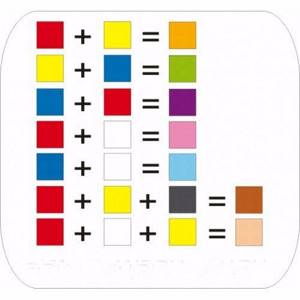
Release form
Manufacturers of this product produce paint in various forms and containers. Aerosol paints are the most popular. They are easy to use and apply evenly. Even a beginner can use them. Paints are presented in standard forms in tin cans of different sizes or in buckets. Such products are applied using a brush or roller. Their consumption is slightly higher than aerosol ones.
Fireproof material for rooms with different heating elements
Protective materials for baths
In order for the walls of the bathhouse to acquire fire-resistant properties, they are finished with heat-resistant materials. These include:
- Pie made of a layer of thermal insulation and a metal reflective coating;
- Sheets of fire-resistant plasterboard;
- Minerite slabs;
- Superisol sheets;
- Stainless steel sheets (a relatively expensive option);
- Glass-magnesite plate with increased moisture resistance;
There are 2 types of SML boards on the building materials market - with and without laminated coating.
Calcium silicate sheet materials. It has all the properties of LSU boards, however, in comparison with them, such sheets are less durable; Terracotta tiles.
For fireplace lining
However, fire-resistant tiles are more often used. In addition to its protective properties, it has excellent decorative properties, thanks to which you can achieve aesthetics and a feeling of comfort in the room.
Types of fireplace tiles:
- Terracotta. The numerous positive qualities of this material include its high ability to transfer heat, which is an excellent indicator of a finishing fireplace material;
- Tiles. The properties are similar to terracotta. The main difference is the complex decorative pattern on the front surface of the piece element, which is often applied by hand;
- Clinker tiles. It is easy to install and maintain;
- Porcelain tiles. Has increased resistance to cracking. Its characteristics are similar not only to clay materials, but also to granite;
- Majolica. It is based on terracotta tiles, which during manufacturing are covered with an additional layer of glaze.
Basic rules for choosing suitable fireproof tiles for a fireplace:
- The material must be moisture resistant;
- Resistant to sudden temperature changes;
- The minimum number of pores will allow the tile to last longer;
- The optimal thickness of the piece element is 8 mm;
- Tiles marked “A” are of higher quality than “B” elements.
Materials for lining blast furnaces
Blast furnace lining is an internal refractory shell that protects the main body from overheating.
It is performed using vermiculite slabs, kaolin cardboard or paper.
- Fireclay brick;
- Basalt fiber;
- Hewn stone (quartz, sandstone, conglomerate);
- Fireclay or mullite solutions.
Instructions for laying refractory bricks in a kiln:
Wall decoration for the boiler
The following sheet materials are used for cladding wall structures near the heating boiler:
- Fireproof plasterboard;
- Sheets with a base of xylolite fiber.
Wall decoration for the stove
Produced using the following sheet materials:
- Metal screens;
- Reflective coverings made of rolled stainless steel sheets;
- Minerita;
- Fire-resistant plasterboard sheet;
- Glass-magnesium plate material.
Ensuring the protection of wall structures from the harmful effects of high temperatures is a mandatory measure that can be done in a great variety of ways. Installation of piece and sheet elements will not take too much time and money, but will allow the heated room to last much longer.
The Best Brands of Heat-Resistant Oven Paints
There are manufacturers who have long established themselves in the construction market. We offer a list of the main brands:
For metal furnaces
- Certa heat resistant oven paint creates an enamel finish. Withstands temperatures up to 650 degrees. Fireproof, heat-resistant, has anti-corrosion and water-repellent properties. Price for 0.8 kg – 450 rub.

- DALI Heat-resistant enamel. Heat-resistant, moisture-resistant, weather-resistant. has anti-corrosion characteristics. Can be applied by spray or brush. Price – 300 rub.
- Celsite-500. Heat-resistant, anti-corrosion, moisture-proof and salt-resistant. Withstands temperatures up to 500 degrees. It has a wide color palette from white to rich black. Price – from 300 rub. per kg.
- Temal 400. Heat-resistant, moisture-resistant. For stoves that are located indoors. Withstands temperatures up to 750 degrees. Price per liter – 850 rubles.
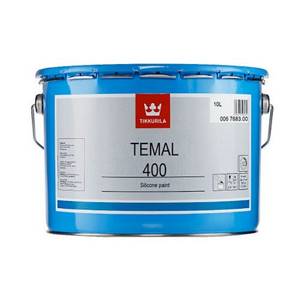
For brick
- Ecoretta. Weight – 1 kg. Designed for stone and brick devices. Heat-resistant water-based paint for stoves can withstand heating up to four hundred degrees. Creates a matte finish. Cost – 110 rubles.
- Kudo enamel is heat resistant. Withstands temperatures up to 400 degrees. Suitable for any surface, including brick ovens. Available in white, black and silver colors. Cost for 400 ml – 300 rubles.
- Thermlux pro. Heat-resistant, light-resistant, has an antifungal effect. Convenient packaging in aerosol form. Cost – 300 rub. per liter
- Enamel OS-82-01. Heat resistant, water resistant. Used for various coatings. Withstands temperatures up to 500 degrees. Price 360 rub. per kg.

- Elcon KO-8101. Heat-resistant and water-resistant paint. Can be used on various surfaces. Withstands temperatures up to 1000 degrees (heat-resistant characteristics vary depending on the color). Available in the form of aerosols and in cans of different capacities. Price – from 300 rub.

How to make heat-resistant paint with your own hands?
Craftsmen or stove owners usually buy ready-made heat-resistant paint compositions. But they can also be made at home.
A proven method is the following: aluminum powder is added to the base. Liquid glass can serve as such a base. These components are easy to find in specialized construction stores. As a result of mixing, a substance of a silver metallic color is obtained, similar to ordinary paint.
When first fired, it emits a characteristic unpleasant odor, but after several days of use it disappears. Due to toxicity, this paint is recommended for use on outdoor stoves or those located in non-residential premises. This heat-resistant paint for brick or metal stoves will serve you for several years.
Preparation for painting and application methods
- The surface is degreased, cleaned of old coating and salts.
- Remove rust. There should be no rust stains left, and the metal surface should acquire a silver color. For processing, use a wire attachment on a grinder or regular sandpaper. You can use sandblasting.
- Then the surface is washed and dried. Using a solvent, the surface is completely degreased. After degreasing, you need to wait six hours if the work is carried out in the air. You need to wait a day indoors.
- Then the coloring composition is applied. There can be several layers of application; in this case, it is better to apply them in different directions - this way, a better finish is achieved.
Paint is applied to the surface in three ways:
Consumption directly depends on the method of application. If the composition is applied with a brush, then the consumption will be 10-40% more than in the case of an aerosol, while the durability of the coating will be approximately the same.
Before work, you need to carefully read the instructions and comply with all painting conditions: temperature conditions, drying conditions, time intervals between applying a new layer. Then the paintwork will last a long time, maintaining its properties.
Painting metal gives the surface of this material a more aesthetic appearance and helps protect it from the negative effects of the environment. And when using special dyes, it can significantly reduce losses on heating mains.
Unfortunately, regular paint is susceptible to burning and charring. Therefore, if painted metal is used under harsh temperature conditions, the protective layer completely burns out or peels off when heated without the use of an open flame.
If it is known that a metal part will be operated at high temperatures, then special fire-resistant paint is used to paint it.
Conclusion
Heat-resistant paint is the best option for painting the surface of the stove and its individual parts. Due to its resistance to high temperatures, this coating will reliably protect the oven device from dust and moisture. When choosing heat-resistant paint, it is worth considering the material on which it will be applied.
Products for brick and metal surfaces differ in composition and other characteristics. The construction market offers a huge selection of color palettes of heat-resistant paint compositions that will please even the most picky stove owner.
What did you paint with before?
Previously, Russian stoves were treated with chalk and lime-based whitewash. The consistency of the whitewash should have been like liquid sour cream. Before starting to paint, the surface was processed - cleaned of dirt, dust and clay. The paint was prepared as follows: for 100 g of lime, take 40 g of salt, previously dissolved in water.
Whitewash, despite its simple composition, had high strength indicators. The only negative is that the surfaces painted with this paint were white.

They also painted stoves and fireplaces with chalk. It was first sifted through a sieve, then diluted with milk and mixed thoroughly. If the solution turned out yellow, then blue was added. This paint was applied in several layers, and the surface had to be moistened with water. Then the first layer was applied, and after complete drying the next one was applied.

